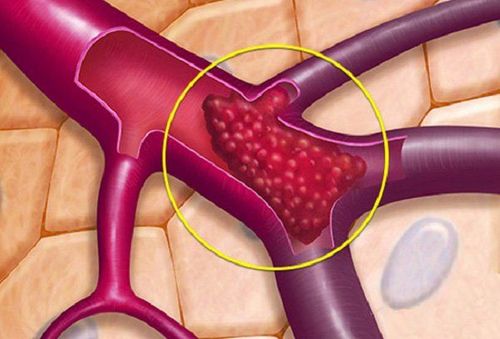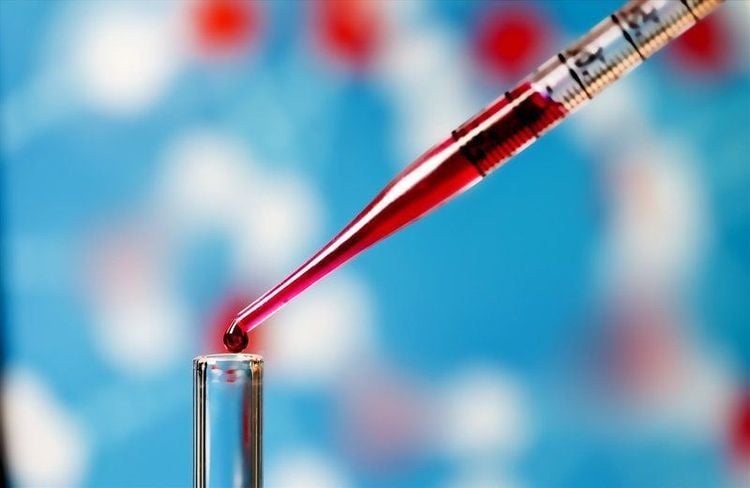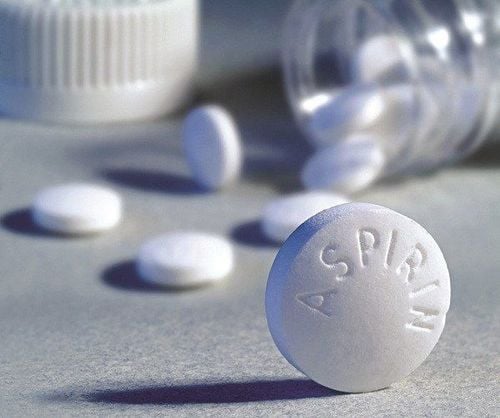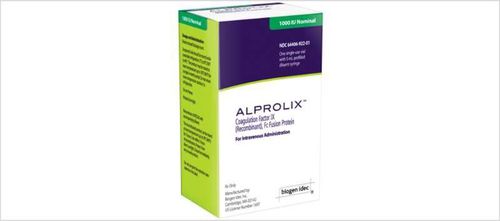This is an automatically translated article.
Coagulation - hemostasis tests are increasingly used in the diagnosis and treatment of diseases. Hematology test Von-Kaulla test is a test used to monitor blood clot dissolution time, based on the time of clot formation to evaluate the activity of factors.1. What is the Von-Kaulla test?
The Von-Kaulla test is used to evaluate the activity of the fibrinolytic system, by forming a precipitate of fibrinogen and fibrinolysis activators, so that when the precipitate is coagulated, dissolution occurs. Clotting occurs very rapidly because there is no inhibitor of fibrinolysis.In fact, since fibrinolysis is based solely on the activity of the fibrinolytic system, the Von-Kaulla test is used to evaluate primary or secondary fibrinolysis and detect potential fibrinolysis. .
In addition, the Von-Kaulla test is also used to monitor thrombolytic therapy.
2. Principle of performing the Von-Kaulla . test
Normally, it takes about 2 days to dissolve the clot, fibrin is formed and will be digested by plasmin. By withholding the plasmin-producing stimulants (euglobulin), after clotting, the normal time to dissolve the clot is more than 1 hour.The process of monitoring the clotting time of plasma that has removed the inhibitor, retains the plasmin promoter to evaluate the degree of fibrinolysis.

Huyết khối tan trong thời gian trung bình là 1 tiếng
3. Perform the Von-Kaulla . maneuver
Performing the Von-Kaulla test requires the following steps:Step 1: Prepare the media, chemicals
CaCl2 M /10 Acetic acid 2% Michaelis buffer pH 7.35 Test tube size 75 x 9, 5mm Step 2: Carry out the technique
The technician will draw blood and separate the patient's plasma. In a test tube containing 0.3 ml of plasma from the control sample or from the patient, add 3ml of distilled water. Add 2 drops of 2% acetic acid to each tube, check for pH 5.2. Centrifuge at 3000 rpm for 10 minutes; Decant the clear water, leaving the precipitate at the bottom of the tube. Use paper to blot and dry the tube wall. Add to each tube 0.3 ml of Michaelis buffer pH 7.35 diluted 1/4 in 0.9% NaCl solution, and use a stick to dissolve the precipitate. Add 1 drop of CaCl2 M/10 to each tube, place the test tube in a 37°C water bath, wait for freezing. Press the clock to keep track of the time it takes to completely melt. Instructions for reading results: Complete dissolution
Before 15 minutes – Acute fibrinolysis 15 – 30 minutes – Severe thrombolysis 30 – 45 minutes – Thrombolysis 45 – 60 minutes – Latent fibrinolysis Over 60 minutes – Normal

Nghiệm pháp Von-Kaulla được thực hiện tại các phòng xét nghiệm
When the Von - Kaulla test is less than 60 minutes, it means that there is excessive fibrinolytic activation, leading to fibrinogen loss and bleeding.
Vinmec International General Hospital is a professional quality hospital with a team of leading medical professionals, a system of modern technological equipment, comprehensive and professional medical examination, consulting and treatment services. ; civilized, polite, safe and sterile medical examination and treatment space. Customers when choosing to perform tests here can be completely assured of the accuracy of test results.
To register for examination and treatment at Vinmec International General Hospital, you can contact Vinmec Health System nationwide, or register online HERE.
MORE:
Blood clots after surgery: What to know What is a blood clotting disorder? Indicators of coagulation disorders What is coagulation? When to do blood coagulation test?













